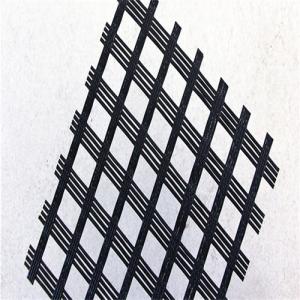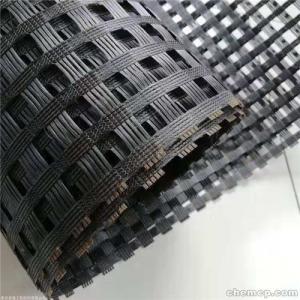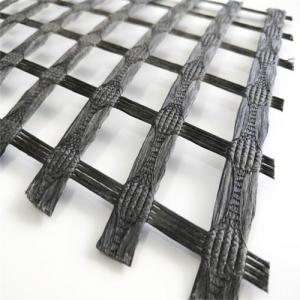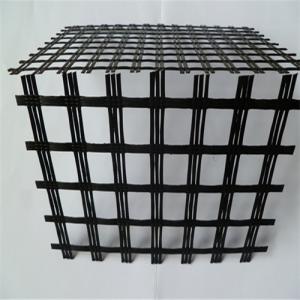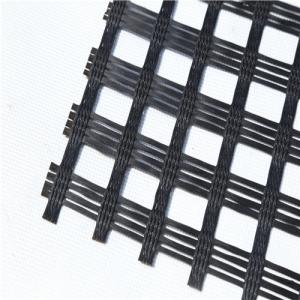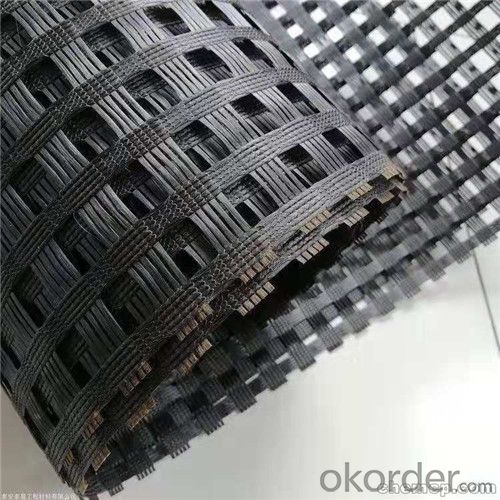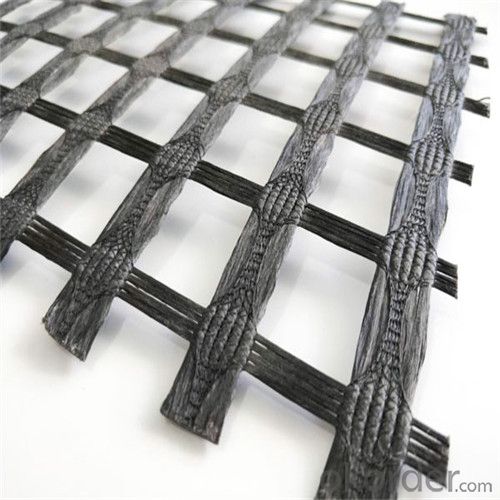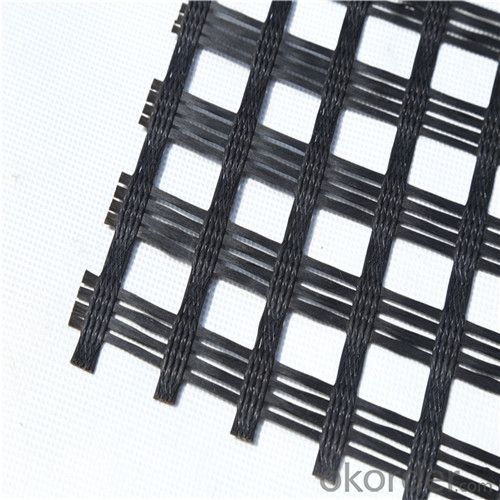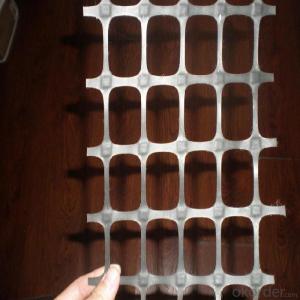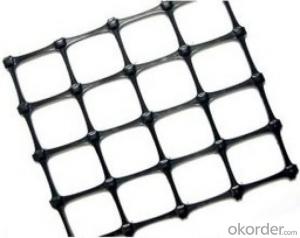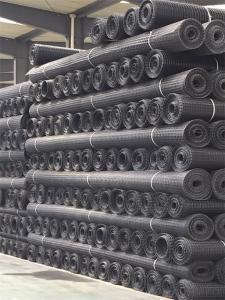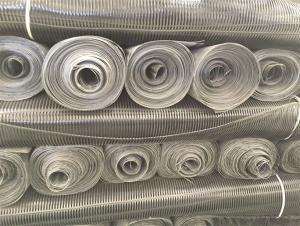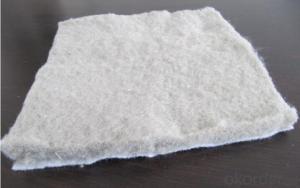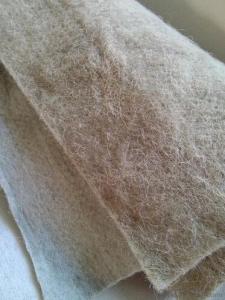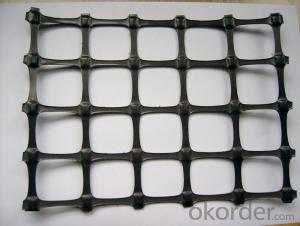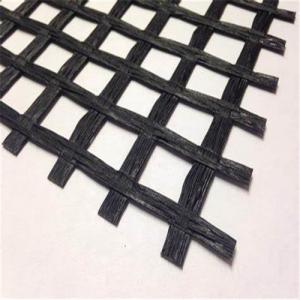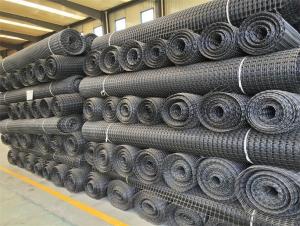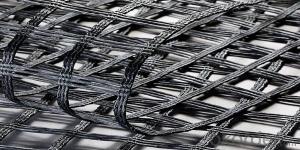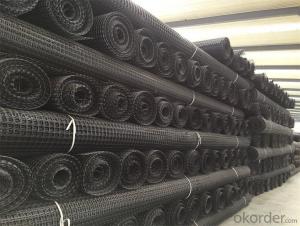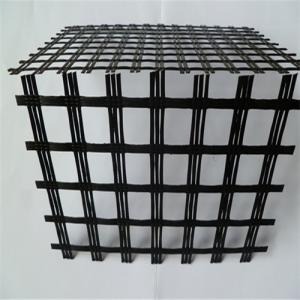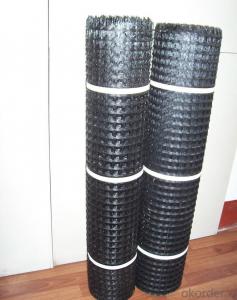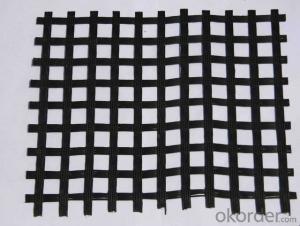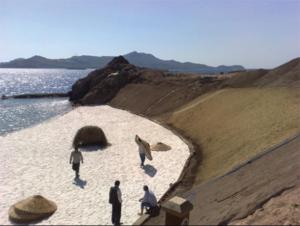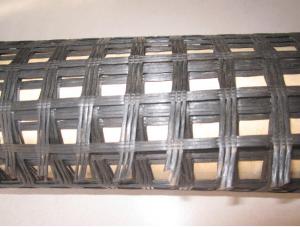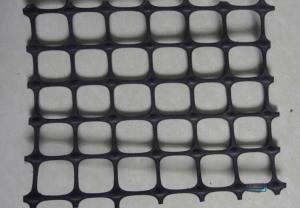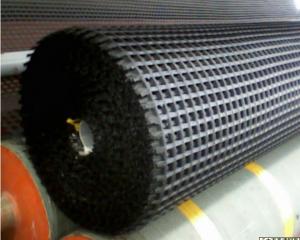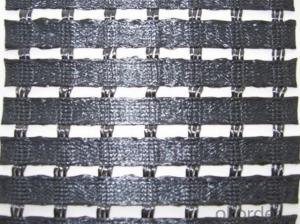Fiberglass Geogrids in Civil Engineering Construction
- Loading Port:
- China main port
- Payment Terms:
- TT or LC
- Min Order Qty:
- 1000 m²
- Supply Capability:
- 1000000 m²/month
OKorder Service Pledge
OKorder Financial Service
You Might Also Like
Fiberglass Geogrid Introduction
Geogrids form a distinct category of geosynthetics designed for reinforcement. These products are characterized by a relatively high tensile strength and a uniformly distributed array of large apertures (openings between the longitudinal and transverse elements). The apertures allow soil particles on either side of the installed sheet to come into direct contact, thereby increasing the interaction between the geogrid, aggregate and some soils. Also, the apertures ensure vertical drainage of a reinforced free-draining aggregate/soil.
The geogrid elements vary in polymer type and cross-sectional dimensions. They can sometimes change shape and dimensions within their length. Geogrids are either integrally manufactured (punched and drawn sheets; or extruded), ultrasonically or adhesive bonded strips, or joined in a knitting or weaving process and then coated. Polymer types include polyethylene, polypropylene or high tenacity polyester that has been coated.
Although geogrids are used primarily for reinforcement, some products are designed for asphalt overlay and waterproofing or for separation and stabilization. Geogrids also are used as gabions and sheet anchors, inserted between geotextiles and geomembranes, or used to construct mattresses for fills or embankments over soft soils.Woven Geogrids are flat structures in the shape of a net made of high module synthetic fibres, that may also be coated with a further protection layer, using synthetic material (usually PVC or other polymer).
Geogrid application filled with ground material is one of the easy of soil reinforcement. The thickness of such construction may be 50% less than the thickness of standard replacement which allows avoiding costly soil replacement.
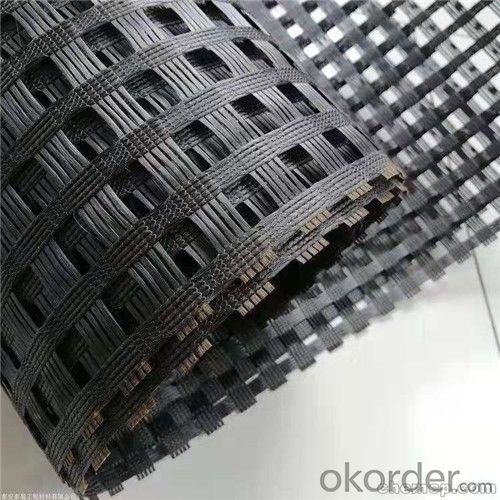
Our Service
1.On a regular basis or as per your request,we entrust national testing agencies to conduct quality inspections
2. Strictly in accordance with the ISO9001-2008 international quality system standard,we monitor and manage the whole process throughout production,quality testing,and measurement to ensure product quality
3. For quality-related construction delay or substandard construction(except for damage or losses due to customer’s responsibility or irresistible natural disasters),we have refunding,replacement,and repair services.We will respond to customers’ feedbacks on quality issues within 24 hours.
After-sales service
1.In order to provide customers with comprehensive technical support,we will provide technical and other related information upon request in a timely manner.
2.In required,we will appoint specialized technicians to the construction site to give technical trainings to construction people,and offer technical guidance throughout the whole construction process.
3.For damage due to shipment and delivery,after we receive the complaint,we will check the issure through provided pictures and videos.If our responsibility is confirmed,we wil offer free replacement.
4.When the construction is completed,as your request,our technical staff may participate in the final acceptance.
FAQ:
Q: What kind of payments does jenor support?
A: T/T, L/C, Cash are accepted.
Q: Do you charge for the samples?
A: Accordeing to our company policy, the samples are free, we only charge the freight fee. And we will return the freight fee during the next order.
Q: Can you produce according to customers' design?
A: Sure, we are professional manufacturer, OEM and ODM are both welcome.
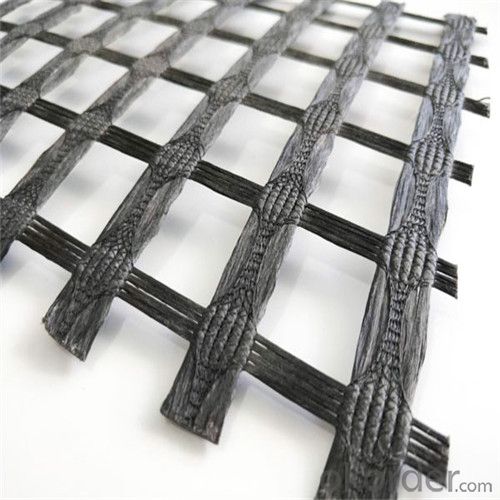
- Q: Do geogrids have any impact on groundwater?
- Yes, geogrids typically have no impact on groundwater as they are non-permeable materials used primarily for soil stabilization and reinforcement purposes.
- Q: How to distinguish from the appearance of plastic geogrid and fiberglass geogrid
- Fundamentally different things.。
- Q: Geogrid price list geogrid products list geogrid manufacturers list
- Geogrid is mainly used in highway and railway, which can reduce the differential settlement of subgrade and abutment, reduce the vibration of vehicle and roadbed, slow down the deformation of roadbed, and ensure the safety and comfort of vehicles
- Q: Which instrument is used to measure the permeability of geotextiles?
- . The warp knitted composite geotextile is a new kind of geotextile material, which is made of glass fiber (or synthetic fiber) as the reinforcing material. The geotextile is a kind of impervious material, which is made of plastic film as impervious material and non-woven fabric. It is a kind of nonwoven and industrial cloth. It is a kind of polyester staple fiber, which is made of 6-12 denier denier fiber with a length of 54-64mm. Through the production of non-woven production equipment, carding, messy (short fiber intertwined with each other), laying nets (standardized entanglement fixation), acupuncture and other production processes are made of cloth
- Q: How do geogrids help in preventing differential settlement?
- Geogrids help in preventing differential settlement by providing structural reinforcement and stability to the soil. They distribute and transfer loads more evenly, reducing differential settlement by limiting soil movement and maintaining a more uniform foundation support.
- Q: What is the recommended geogrid junction spacing for specific applications?
- The recommended geogrid junction spacing for specific applications varies depending on factors such as soil conditions, load requirements, and project specifications. It is best to consult with a geotechnical engineer or refer to industry guidelines and standards to determine the appropriate geogrid junction spacing for a specific application.
- Q: How do geogrids improve the performance of reinforced soil walls?
- Geogrids improve the performance of reinforced soil walls by providing additional strength and stability to the soil structure. They act as a reinforcement material, distributing the forces exerted on the wall more evenly and preventing the soil from sliding or collapsing. This results in increased load-bearing capacity, reduced settlement, and improved overall stability of the reinforced soil walls.
- Q: Can geogrids be used in mining and geotechnical applications?
- Yes, geogrids can be used in both mining and geotechnical applications. Geogrids are commonly used in mining to reinforce soil and rock slopes, stabilize excavations, and provide support for haul roads and mine walls. In geotechnical applications, geogrids are used to reinforce soils, increase slope stability, and improve the performance of retaining walls, embankments, and foundations.
- Q: How much is the overlap length of Geogrid
- GB / T 17689-2008 geosynthetics Plastic Geogrid
- Q: What is the market price of the geotechnical grid in 2017?
- 5) as the second layer of geogrid layer construction method with the first method, and finally filling in 0.3m (coarse sand), filling in the same way as the first layer, using 25T hydrostatic roller two times, so subgrade reinforcement is dealt with. (6) in the third layer (coarse sand) after rolling, along the line in the longitudinal slope on both sides of the geogrid two, overlapping 0.16m, and connected with the same method, and then start the earthwork construction work, laying geogrid in slope protection, each layer must measure the laying of lines, each side to ensure the slope renovation of geogrid buried in slope soil 0.10m. (7) when the geogrid is filled with two layers of soil, that is to say, the thickness of the 0.8m is to be provided with a layer of geogrid at the same time, and then, and so on, until the supply of the market price to the surface of the shoulder table Datong geogrid. Datong geogrid products? Datong geogrid supply market price is how much? Datong geogrid. Datong geogrid products? Datong geogrid supply market price is how much? Datong geogrid. Datong geogrid products? Datong geogrid. (8) the Subgrade after timely slope renovation, and dry rubble slope protection, in addition to each side of the roadbed widening 0.3m, and set aside 1.5% of the settlement.
Send your message to us
Fiberglass Geogrids in Civil Engineering Construction
- Loading Port:
- China main port
- Payment Terms:
- TT or LC
- Min Order Qty:
- 1000 m²
- Supply Capability:
- 1000000 m²/month
OKorder Service Pledge
OKorder Financial Service
Similar products
Hot products
Hot Searches
Related keywords
